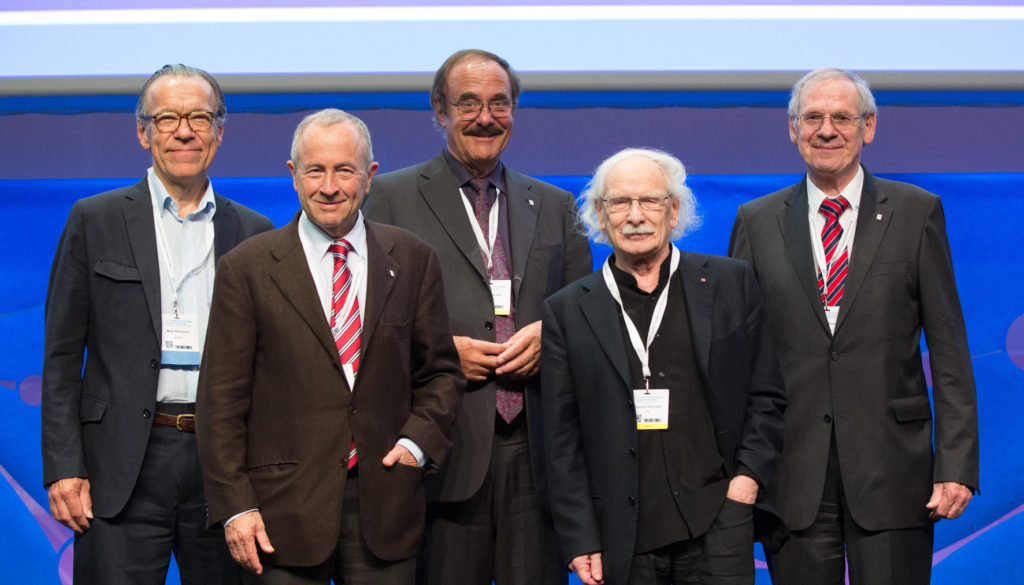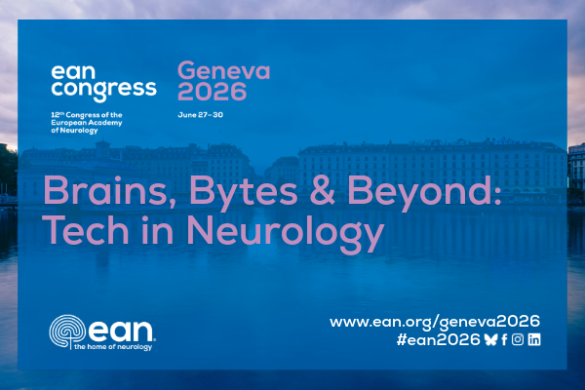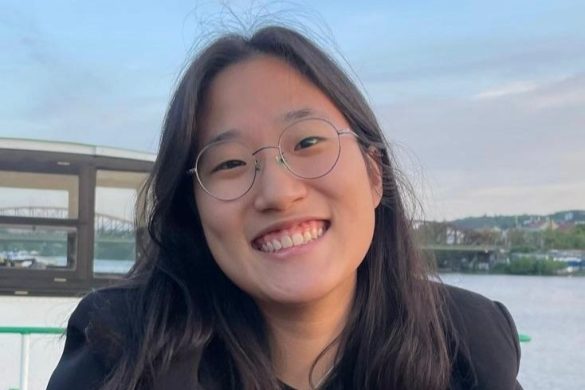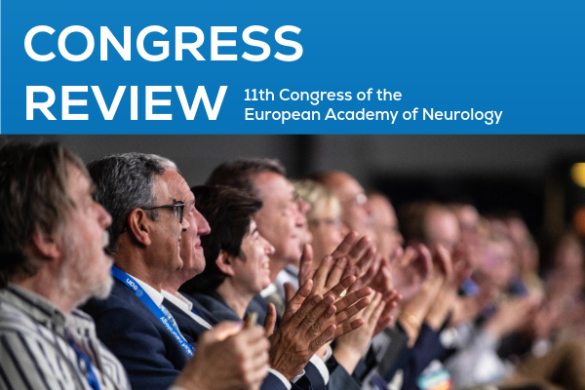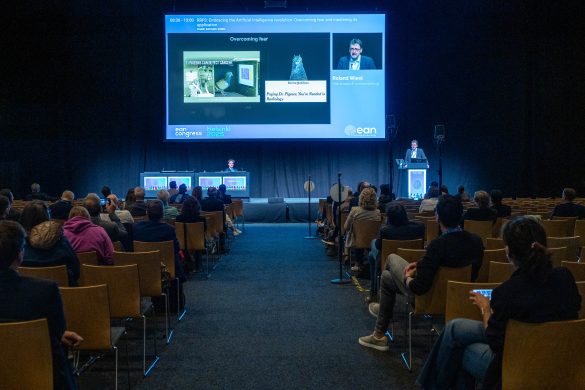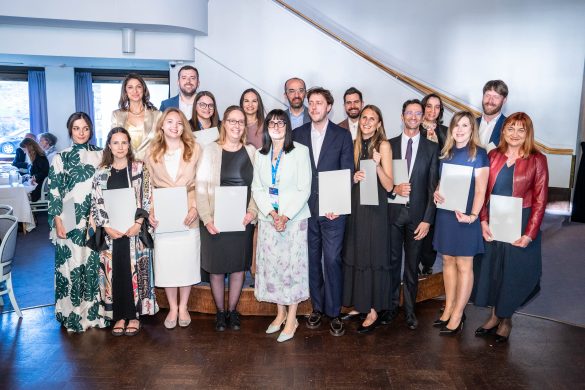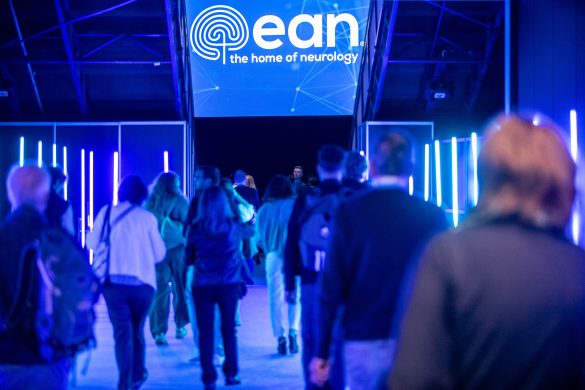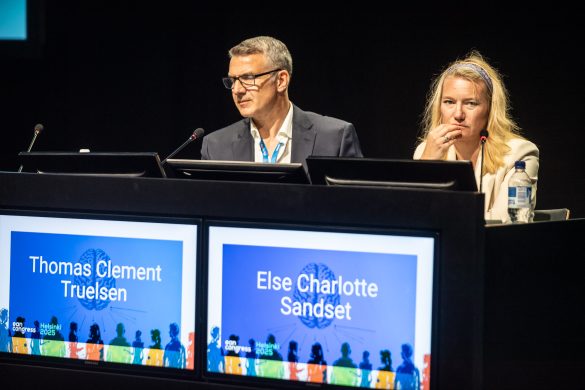Plenary Symposium 1
Presidential Symposium
Hall A, Sun, 2016-05-29 10.30-12.30
Chairpersons
Günther Deuschl, Kiel, GERMANY
Mads Henrik Ravnborg, Odense, DENMARK
- Moritz Romberg Lecture – The prediagnostic phase of Parkinson’s disease
Eduardo Tolosa, Barcelona, SPAIN - Camillo Golgi Lecture – The mirror mechanism: social and medical implications
Giacomo Rizzolatti, Parma, ITALY - Charles-Édouard Brown-Séquard Lecture – 3-D Spatial Memory and Navigation: Functions and Disorders
Thomas Brandt, Munich, GERMANY
During the Presidential Symposium for the first time three outstanding researchers, the winners of the selection for special lecturers, were invited to give their talk.
The first lecture, the Moritz Romberg Lecture, was given by Prof. Tolosa. He covered the spectrum of non-motor symptoms in the pre-diagnostic phase of Parkinson’s disease (PD), particularly focusing on sleep disorders, such as REM behavioral disorder, and constipation, possibly the commonest symptoms in the pre-diagnostic phase. Of particular interest was a recent study addressing MRI signs which can be used in the preclinical phase to help to identify PD as an early diagnosis. Finally, he mentioned some current epidemiological studies investigating prodromal aspects of Parkinson’s disease, as predict-PD in UK.
Prof. Rizzolati was appointed for the Camillo Golgi Lecture for Basic Sciences. As everybody knows, he has been the pioneer in discovering the mirror neurons. He stressed f the impact and importance of these special neurons, describing the steps which lead to discover mirror neurons in monkeys. He highlighted their function and role in transforming sensory information in motor representation. Furthermore, Prof Rizzolati discussed the involvement of mirror neurons in understanding the actions in humans, essential function for understand what is the action about, the goal of an action and how to reproduce it. He also focused on the role of mirror neurons in understanding human specific action.
The third talk was the Brown-Sequard Award Lecture for functional Neuroscience, and it given by Prof. Brandt. He covered the 3D spatial memory and navigation functions and related disorders. He addressed the issues of the heterogeneity of these functions, new approaches to imaging techniques, as PET and VBM, to identify the brain region involved in these functions. Especially, He mentioned previous studies on taxi and bus drivers which identified the activation of right hippocampus as a important part, He highlighted the importance of interactions between hippocampus and vestibular input. Indeed, vestibular loss causes hippocampal atrophy and impaired spatial memory. He pointed out the vestibular contribution to three-dimensional dynamic as well as two-dimensional static spatial memory. Finally, he addressed several disorders characterized by impaired spatial memory and navigation as dizziness, spatial anxiety and vestibulopathy.
The presidential symposium covered the three sections of Neurology and we were glad to see more than 600 participants in the room.
Antonella Macerollo, MD, Neurologist (UK) RRFS delegate
